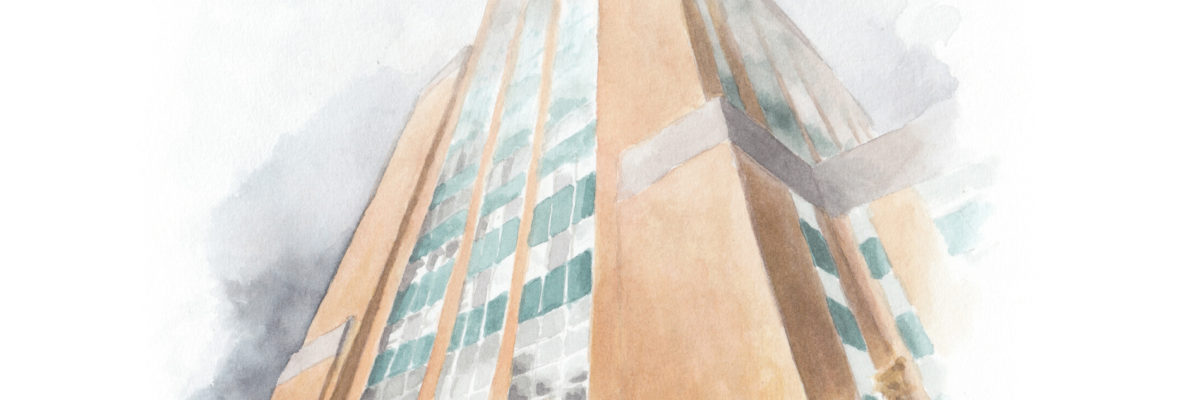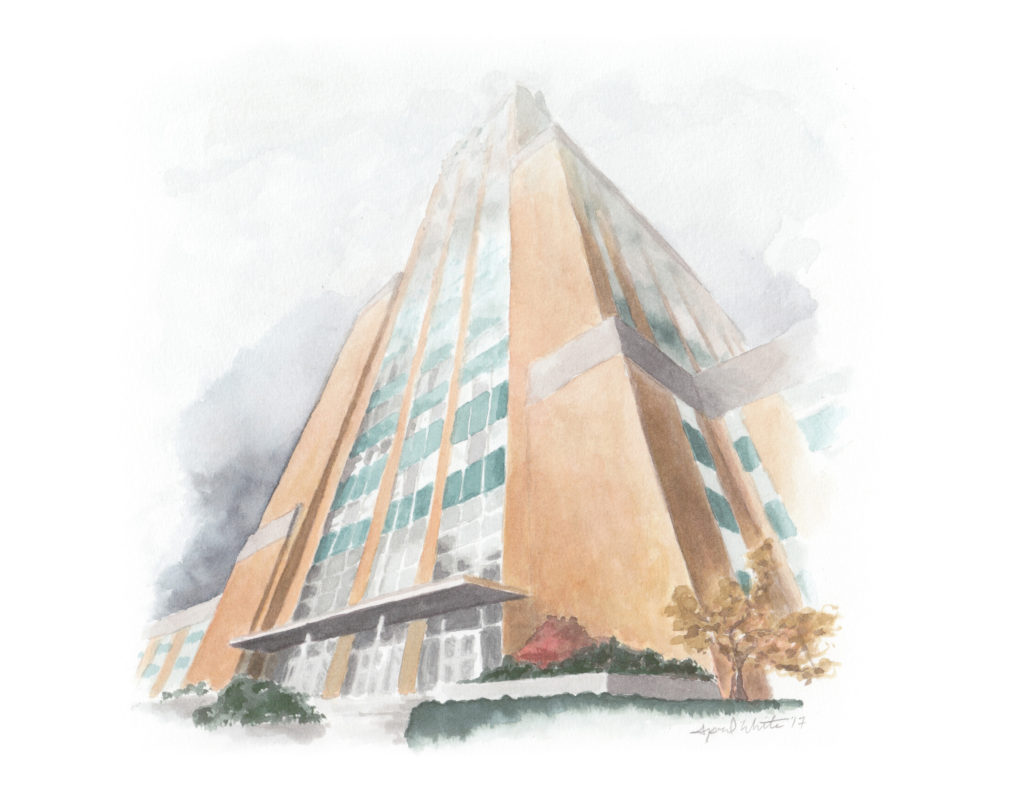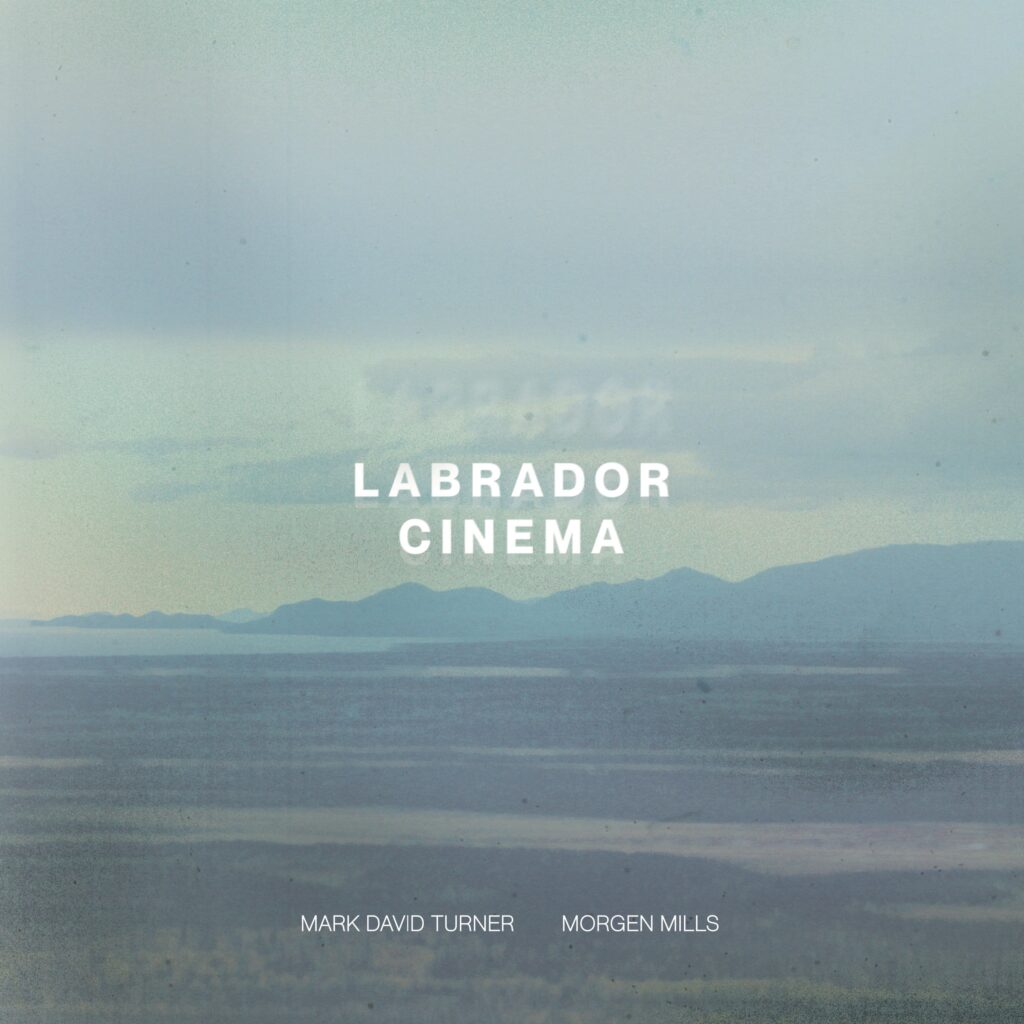Art, Politics and a Government building
BY Drew Brown
March 2017
I’M NOT GOING TO TALK about the politics in art. I’ll leave that for the tragically underemployed fine arts students. I’m going to flip that upside-down and talk about the place of art in politics. Right here, in Newfoundland and Labrador. The question I’ll be answering here over the next few months is: What role does art play in Newfoundland and Labrador politics? Does it hang muted in the halls of power like motel landscapes, or does it fire the imaginations of our lawgivers?
Given that they almost cut ‘culture’ out of the branding, now seems like a great time to ask.
I’m going to start with the Confederation Building itself.
You could say that a legislative building doubles as a work of public art. And it’s a social art that emerges from the art of living (to paraphrase from Rybczynski’s book The Most Beautiful House in the World).
It can be said to be a monument to the power and ideals of the state and the people it represents. And there’s a lot going on up at Confed.
Its design echoes the coastline’s many lighthouses, assuring citizens that… their government never stops burning the midnight oil.
What would become the Confederation Building was first conceived during Newfoundland’s time-out from democracy in the 1930s and 1940s. It was to be a ‘civil service building.’ Its purpose: to provide a single space for the government offices that were then scattered around St. John’s.
There was something bigger going on, though. Sure, you could coordinate things better from one building—or so the thinking went. But they were preparing for the enormous economic and social transformations they thought were necessary to drag the island out of the 17th century. That much change called for a group effort—and one building for the team.
“The art of building emerges from the art of living, just as the art of cookery can be said to be the product of the art of eating.”
-W. Rybczynski, The Most Beautiful House in the World
After Confederation became a reality in 1949, this bureaucratic Mecca would also host the seat of partisan power. The premier would sit at the literal apex of the government machine, sovereign head of the sprawling and anonymous body that would modernize Newfoundland and Labrador.
The building itself represents the marriage of managerial bureaucracy to the province’s political executive. It certainly looked the part of a 20th century Leviathan. At the time it was built, metro St. John’s was almost entirely confined southeast of Empire Avenue. Early photos of the Confederation Building show an Art Deco fortress standing deep in the wilderness, like the lair of a rustic James Bond villain.
Its spire is a glass and metal box lit day and night.
Robert Mellin suggests its design echoes the coastline’s many lighthouses, assuring citizens that even through the long, dark, stormy nights that routinely swallow the province, their government never stops burning the midnight oil.
That light is often the only thing you can see piercing the clouds on a thick foggy day – like the all-seeing eye of Providence, or Sauron. This impression, too, was surely by design. As Mellin notes elsewhere, the Confederation Building, like Joey’s house on Roaches Line, sits on a hill with a panoptic view, “enabling Smallwood to survey his domain both at home and at work.”
“Like gastronomy, architecture was intended to give pleasure, and since it was also a social art, it relied on the active participation of its public.”
–W. Rybczynski, The Most Beautiful House in the World.
The House of Assembly at the Confederation Building differs starkly from its counterparts in the rest of Canada. The Nova Scotia legislature is located in the heart of downtown Halifax. The Alberta legislature is surrounded by pools and parkland on the slopes of Edmonton’s river valley. The old Colonial Building on Military Road was located above the harbour.
But the House of Assembly is far removed from easy access by the unwashed masses. No doubt the spectre of the riots of ‘32 figured at the back of Smallwood’s mind—and that of his architect, A. J. C. Paine. The finished People’s House was remote and forbidding, more like a Tibetan palace than the glorified municipal council it contains.
Although the city has since mushroomed around the building, its foreboding aura remains. Even if you assemble a crowd at Memorial University and march them up Prince Philip. Even if you to stand before the monolithic tower of the Confederation Building—your back to the city below and the North Atlantic beyond—you will feel small.
You will feel small even though the building’s architectural vision has not aged well. It has lost most of its force as a metaphor for the superhuman power of the provincial state to reshape Newfoundlanders into proper North Americans. It’s ironic: during a time that its capacity to administer most of its social services has never seemed so weak, the government has never loomed larger.
“Sometimes the house of the future is better built, lighter and larger than all the houses of the past so that…. Maybe it is a good thing for us to keep a few dreams of a house that we will live in later, always later, so much later, in fact, that we shall not have time to achieve it.”
-Gaston Bachelard, The Poetics of Space.
It has stood through worse. It survived resettlement, the Upper Churchill, the moratorium, the Lower Churchill, and other greater and lesser scandals, nearly all of which began and fizzled out within its walls.
But what happens when ordinary mortals are no longer impressed by the power of the state that the Confederation Building celebrates?
Maybe we’ll find out after the next budget.





